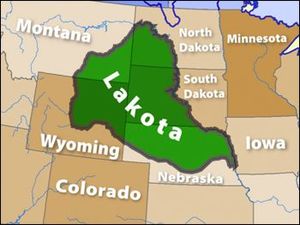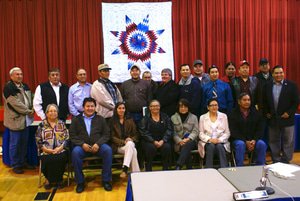Overview of Tribal Government

Regarding tribal government, the Lakota tribe has their own government that is apart from the United States Government. Members of the Sioux Indian tribe will be able to partake in elections on their reservations and will also abide by tribal laws and regulations that differ from those of the United States.
Lakota Government Operation
The Lakota Government is represented by officials that are elected to various councils for the different reservations located in Nebraska, the Dakotas and Minnesota. Any band or reservation member that resides on or off a reservation will have the ability to vote in elections for each reservation, and each will have a unique style of government and an election cycle that is entirely based on a reservation constitution. Most of these forms of government will follow a tribal council model that includes a president or a chairman that is elected by the eligible voters.
The structure of the Lakota government serves as an example for other Sioux governments and the contemporary government of the Lakota Indians is the National Sioux Council, made up of delegates from various Lakota reservations. The council meets each year to discuss any and all matters that affect the Lakota nation and a headman of each ban will be represented at these meetings. Each reservation has an elected tribal council and this council serves as the supreme governing body. It can enter negotiations with other governments, including the United States, and can work with these governments to pass laws and establish courts.
Tribal vs US Government

Based on the United States Constitution, Native American tribes in the United States are considered sovereign nations and they are allowed to have their own set of customes, laws and own form of government that differs from the US Government. A Tribal government will be excluded from having to comply with most federal legislation, which can include the Americans with Disabilities Act. The benefit is that tribal governments have special privileges and powers because they have jurisdictional power within a territory.
Even though tribal governments are completely separate from the US Government, some tribal council actions will be subject to the authority of the US Government, reminding the Sioux tribes that they are not alone in their lands. In most cases, states will not interfere with tribal laws or governments, but Congress does have the power to pass laws that can govern Indian tribes and members of each tribe.
Tribal Branches of Government
Like the US Government, Lakota Government also has branches and also have constitutions that are quite similar to that of the US Constitution. Many tribes, including the Lakota tribe, will have various branches of government that allows for the separation of power. These tribal branches operate in a similar way as the branches within the US Government.
- Elected Governors, Presidents, Chiefs, or Chairs are those that hold the executive powers of a tribe.
- The Tribal Council will have the legislative power on the reservation and the council can pass laws that are collected in various Tribal Codes.
- The Tribal Court system will handle the disputes between members of the tribe and can also handle issues between member and non-members.
